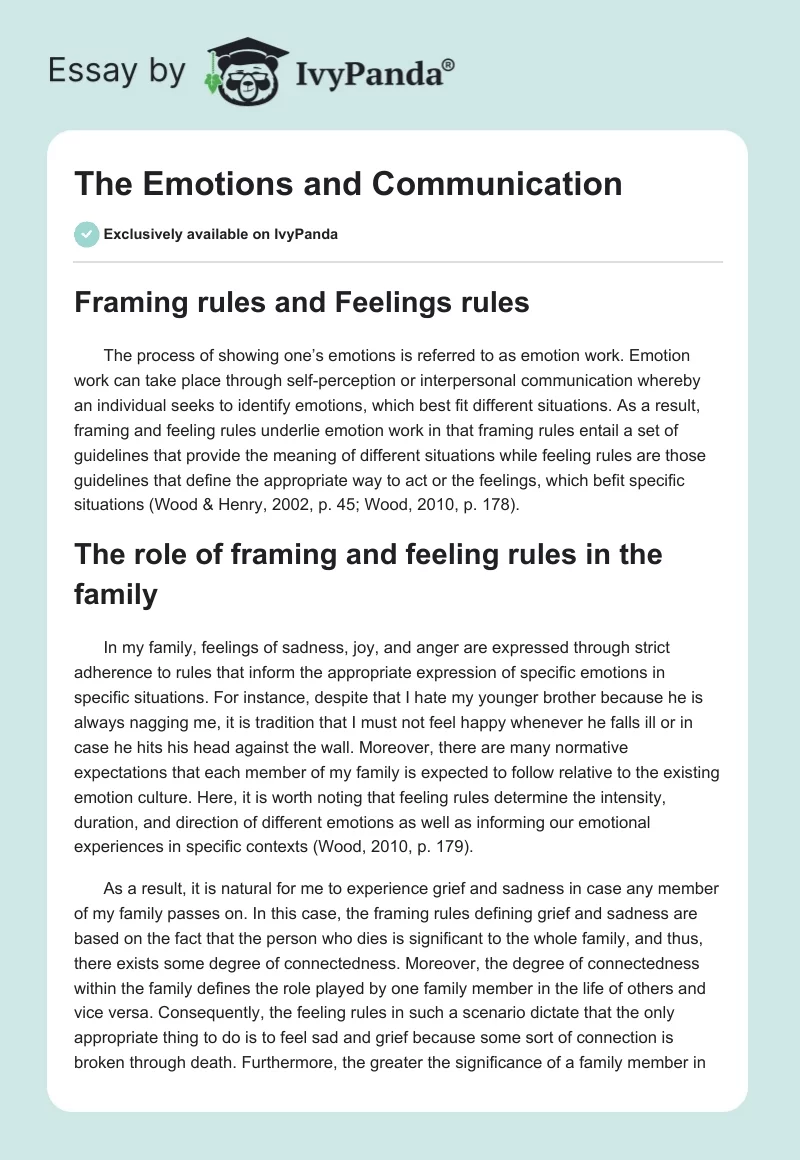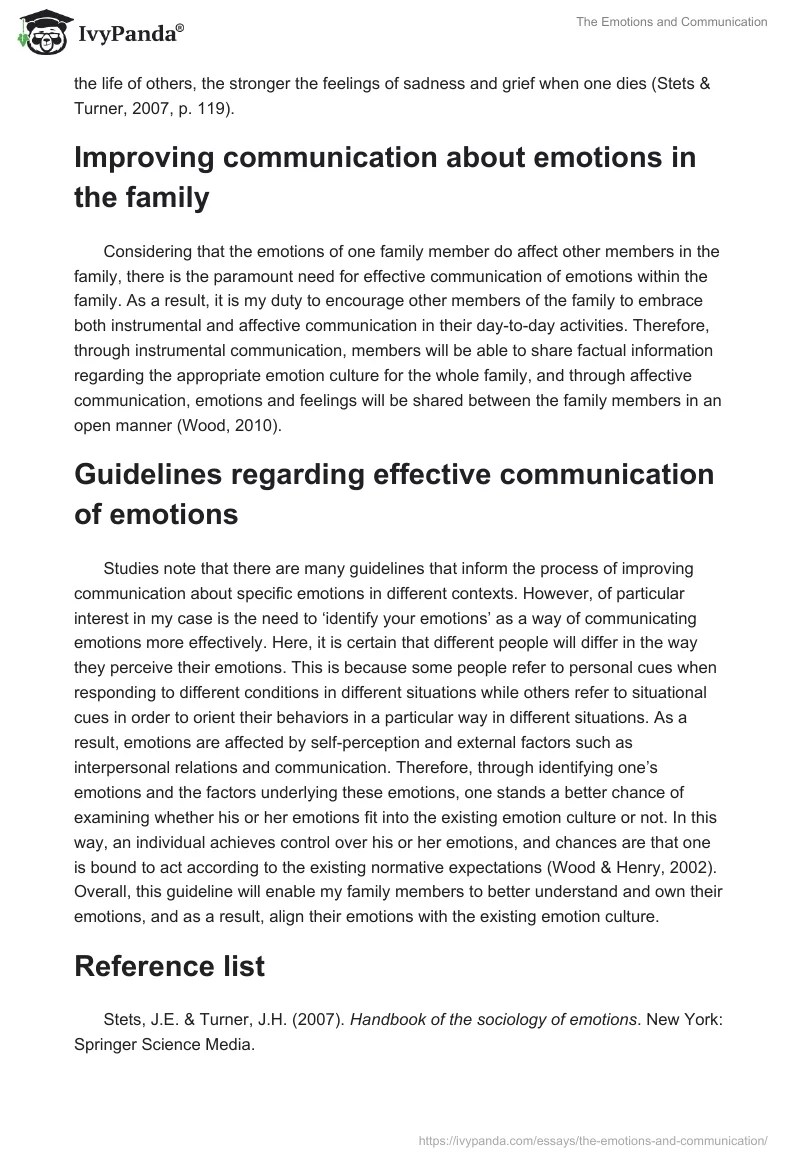Framing rules and Feelings rules
The process of showing one’s emotions is referred to as emotion work. Emotion work can take place through self-perception or interpersonal communication whereby an individual seeks to identify emotions, which best fit different situations. As a result, framing and feeling rules underlie emotion work in that framing rules entail a set of guidelines that provide the meaning of different situations while feeling rules are those guidelines that define the appropriate way to act or the feelings, which befit specific situations (Wood & Henry, 2002, p. 45; Wood, 2010, p. 178).
The role of framing and feeling rules in the family
In my family, feelings of sadness, joy, and anger are expressed through strict adherence to rules that inform the appropriate expression of specific emotions in specific situations. For instance, despite that I hate my younger brother because he is always nagging me, it is tradition that I must not feel happy whenever he falls ill or in case he hits his head against the wall. Moreover, there are many normative expectations that each member of my family is expected to follow relative to the existing emotion culture. Here, it is worth noting that feeling rules determine the intensity, duration, and direction of different emotions as well as informing our emotional experiences in specific contexts (Wood, 2010, p. 179).
As a result, it is natural for me to experience grief and sadness in case any member of my family passes on. In this case, the framing rules defining grief and sadness are based on the fact that the person who dies is significant to the whole family, and thus, there exists some degree of connectedness. Moreover, the degree of connectedness within the family defines the role played by one family member in the life of others and vice versa. Consequently, the feeling rules in such a scenario dictate that the only appropriate thing to do is to feel sad and grief because some sort of connection is broken through death. Furthermore, the greater the significance of a family member in the life of others, the stronger the feelings of sadness and grief when one dies (Stets & Turner, 2007, p. 119).
Improving communication about emotions in the family
Considering that the emotions of one family member do affect other members in the family, there is the paramount need for effective communication of emotions within the family. As a result, it is my duty to encourage other members of the family to embrace both instrumental and affective communication in their day-to-day activities. Therefore, through instrumental communication, members will be able to share factual information regarding the appropriate emotion culture for the whole family, and through affective communication, emotions and feelings will be shared between the family members in an open manner (Wood, 2010).
Guidelines regarding effective communication of emotions
Studies note that there are many guidelines that inform the process of improving communication about specific emotions in different contexts. However, of particular interest in my case is the need to ‘identify your emotions’ as a way of communicating emotions more effectively. Here, it is certain that different people will differ in the way they perceive their emotions. This is because some people refer to personal cues when responding to different conditions in different situations while others refer to situational cues in order to orient their behaviors in a particular way in different situations. As a result, emotions are affected by self-perception and external factors such as interpersonal relations and communication. Therefore, through identifying one’s emotions and the factors underlying these emotions, one stands a better chance of examining whether his or her emotions fit into the existing emotion culture or not. In this way, an individual achieves control over his or her emotions, and chances are that one is bound to act according to the existing normative expectations (Wood & Henry, 2002). Overall, this guideline will enable my family members to better understand and own their emotions, and as a result, align their emotions with the existing emotion culture.
Reference list
Stets, J.E. & Turner, J.H. (2007). Handbook of the sociology of emotions. New York: Springer Science Media.
Wood, J.T. & Henry, A. (2002). Everyday encounters: An introduction to interpersonal communication (4th ed.). Canada: Nelson Thomson Learning Publishers.
Wood, J.T. (2010). Interpersonal communication: Everyday encounters (6th ed.). Boston: Wadsworth Cengage Learning Center.


